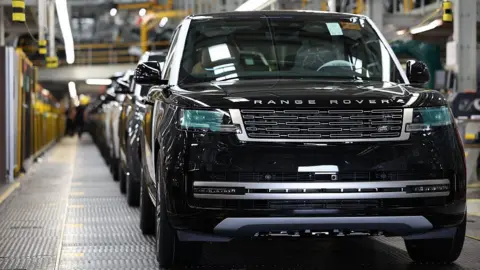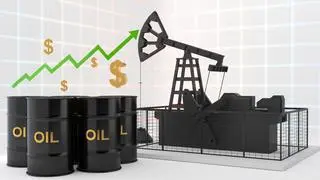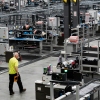Business reporter, BBC News
 EPA
EPAThe UK economy is forecast to grow slightly more than previously expected in 2025, but the International Monetary Fund (IMF) has warned that the Chancellor must stick to her rules on tax and spending.
In its annual health-check for the economy, the IMF predicted growth of 1.2% this year, rising to 1.4% in 2026.
It said an economic recovery was “under way” after a boost in the first three months of the year.
The forecast from the influential body comes just over a month after it downgraded its expectations for the UK from 1.6% in 2025 to 1.1%.
Luc Eyraud, the IMF’s UK mission chief, said growth had been “very strong” in the first three months of the year.
Official figures released this month revealed the economy was boosted by increases in consumer spending and business investment, but the figures were during the period before the US imposed import tariffs and UK employer taxes increased in April.
The IMF praised the government’s planning reforms and infrastructure investment plans, which it said would increase growth “if properly implemented”.
But it added that a “high level of global uncertainty, volatile financial market conditions, and the challenge of containing day-to-day spending” mean the Chancellor Rachel Reeves will face “difficult choices” to balance taxation with spending in the long term.
It suggested some changes to the government’s self-imposed fiscal rules, including cutting the number of times the Office for Budget Responsibility (OBR) produces an assessment of the UK’s finances to once a year, rather than twice.
Fiscal rules are self-imposed by most governments in wealthy nations and are designed to maintain credibility with financial markets.
The government has repeatedly said its rules are “non-negotiable”.
The chancellor has two main rules which she has argued will bring stability to the UK economy:
- day-to-day government costs will be paid for by tax income, rather than borrowing
- to get debt falling as a share of national income by the end of this parliament in 2029/30.
Global trade tensions
Growth next year will be weighed down by global trade tensions, including less activity among the UK’s trading partners, the impact of US President Donald Trump’s tariffs and “persistent uncertainty”, the IMF’s report said.
The combination of these factors will reduce next year’s growth to the tune of 0.3% by 2026, it said.
But the IMF pointed to trade agreements the UK has struck with countries like EU, India and the US, saying they demonstrated the government’s commitment to “establishing a more predictable environment for UK exporters”.
Chancellor Reeves welcomed the report, saying that the government’s trade deals were “protecting jobs, boosting investment and cutting prices”.
But Mel Stride, shadow chancellor, said Reeves had “already fiddled her fiscal targets to allow her to borrow hundreds of billions more over this parliament”.
“In a context where the Chancellor’s credibility is already in tatters, changing the goalposts a second time would run real risks with market confidence,” he added.
Rising inflation
The report comes just over a month after the IMF cut its expectations for UK growth this year to 1.1%, which it said was due to an increase in borrowing costs, US tariffs and a hit from inflation.
It added at the time that it expected UK inflation to slow to 2.2% by 2026, close to the Bank of England’s 2% target.
Earlier this month the Office for National Statistics said inflation rose unexpectedly in April to 3.5%, from 2.6% in March. On Tuesday, the IMF said this rise in inflation will last until the second half of this year, returning to target “later in 2026”.



















